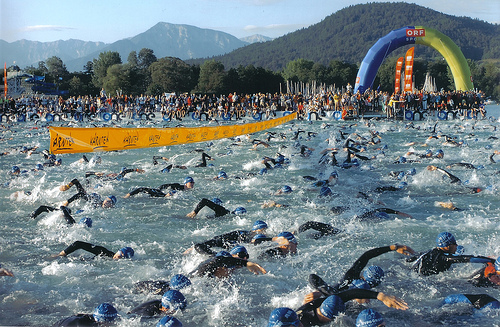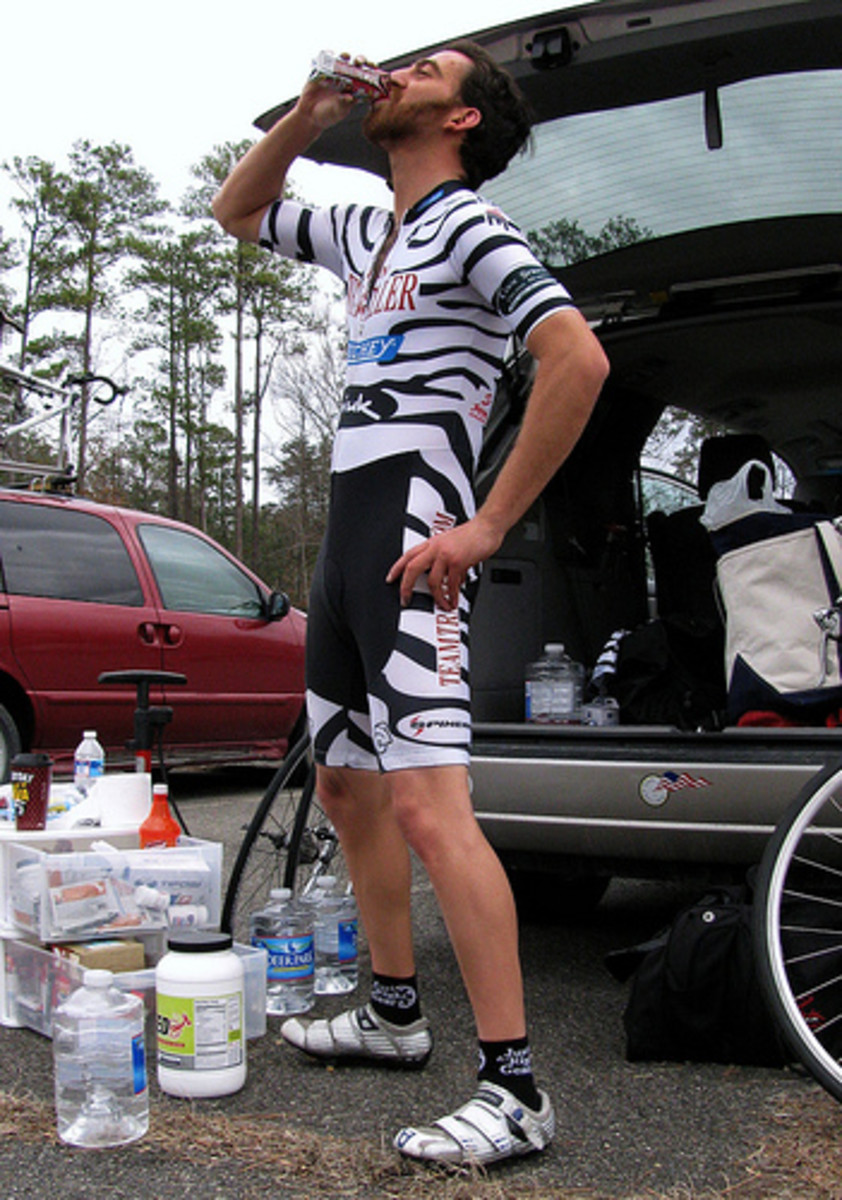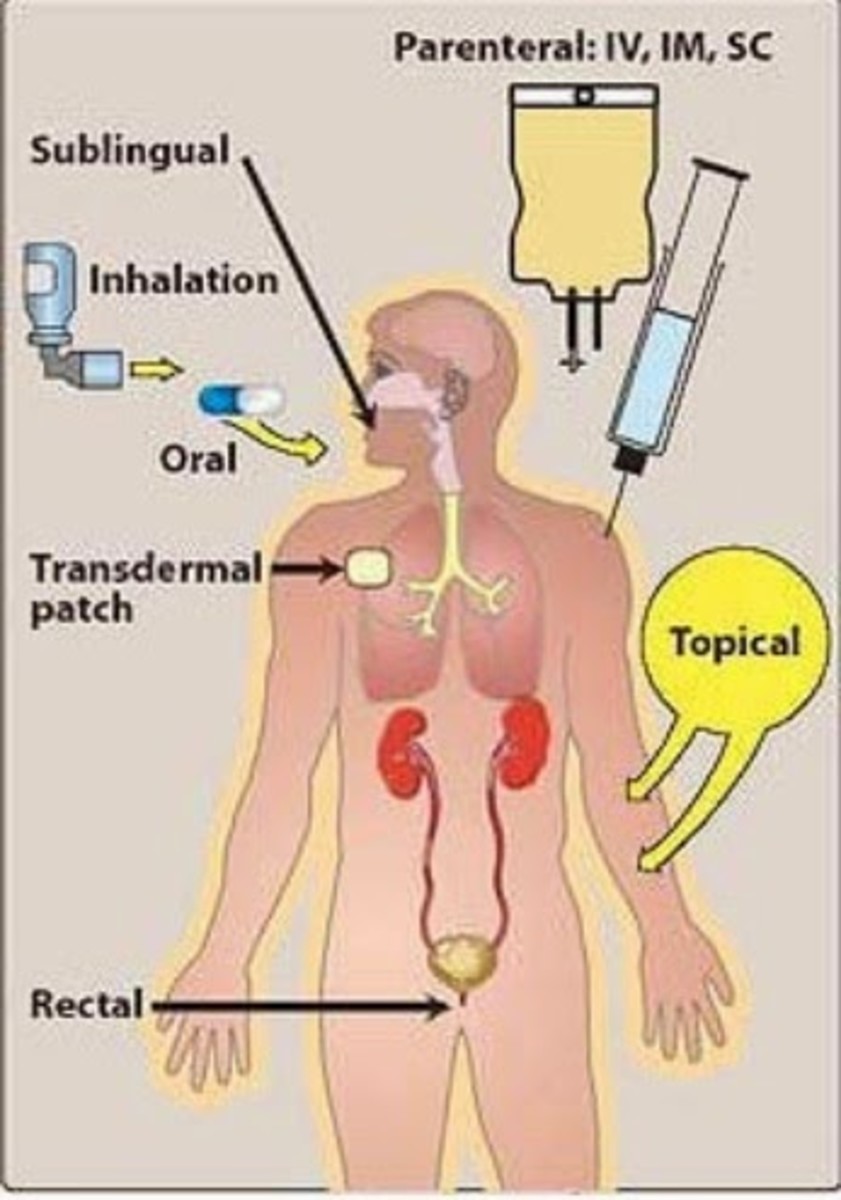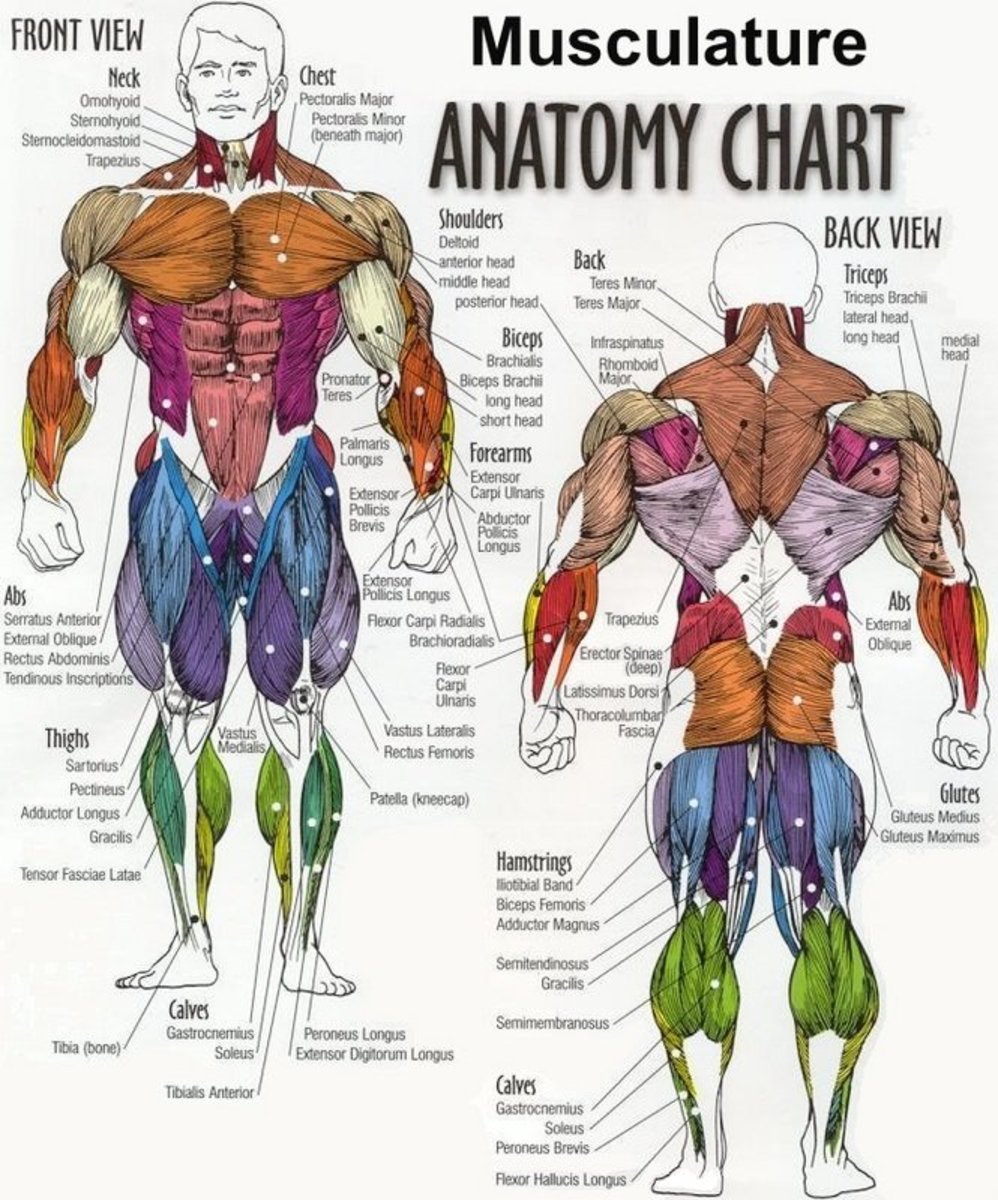Temperature Regulation In Endurance Athletes: Maintaining Homeostasis In Sportspeople
Maintaining body temperature and homestasis for optimal performance
An endurance athlete has the constant problem of maintaining their body temperature in order to ensure optimal conditions for performance. In many ways we do not take this to be a significant factor for endurance performance however in long events or in extreme weather conditions the ability of the body to maintain homeostasis becomes an issue. Whether it's the Ironman Triathlete suffering with muscle cramps as a result of the external temperature or a polar explorer who has to maintain an adequate body temperature to ward off the effects of hypothermia
Maintaining a balance is the simple equation of keeping an equal level of heat loss and heat production.
Ironman Triathlon places extreme thermoregulatory demands on the body

Heat production and heat loss in endurance athletes
Heat Production
| Heat Loss
|
|---|---|
Basal Metabolism effect
| Radiation Effect
|
Muscle Activity
| Conduction and Convection
|
Effect of Body Temperature
| Heat Evaporation
|
Hormonal Effect
| Respiration
|
Adapted from Dick. F W, (2002) Sports Training Principles. 4th Ed. A & C Black
Heat production from your basal metabolism
Your basal metabolic rate is the rate at which your body burns energy while at rest. It is often expressed scientifically in kilocalories per square metre of the body surface per hour and energy release is sufficient only for the functioning of the vital organs of the body. Simple respiration in body tissues creates heat as a waste product as part of the reaction.
Influencing factors include
- The basal metabolic rate of children is often higher than adults due to their growth needs
- Fasting and starvation decreases metabolic rate- the body attempts to conserve energy
- Increased protein intake can actually raise metabolic rate more than fats and carbohydrate due to the need for nitrogen removal from the body to maintain homeostasis.
Muscular activity and heat production
Over 40% of the body's heat production is through muscular activity. Whether at rest or during exercise, Exercise can increase this figure dramatically due to the needs of the body to meet our fuel demands for endurance exercise and ATP/ADP breakdown.

The effect of body temperature
When the body experiences high temperatures it's reaction is to sweat to increase heat loss. This in itself doesn't affect your metabolism greatly, however basal metabolism increases by 7% for every 0.5 Celsius of body temperature elevation which further increases body temperature.
Low temperatures lead to a shivering effect to create additional body temperature.
Consistent exposure to extremes of cold and warmth can lead to conditions of hyperthermia or hypothermia. The body can acclimatise to temperature however persistent exposure increases the risk level.
Hormonal effects on heat production
Hormones can have various effects on the body and heat production. Thyroxine increases your metabolic rate and therefore raises heat production within the body. Your metabolic effect is also raised by the hormones adrenaline and noradrenaline.

Heat loss through radiation
Radiation refers to the transfer of heat from a source to another object. In the case of an athlete this is usually a transfer to objects cooler than the athlete. Athletes lose less heat when the environment and surrounding objects are close to the athlete's temperature.
Heat loss through conduction and convection
Heat can be lost to the air and objects with which the body has contact with- be it clothing, your bicycle. If the athlete moves forward into cooler air like a runner or cyclist would the warmed air is removed away from the body and creates an environment of conduction and convection due to the passage of air over the body's surface.
Athletes should therefore dress accordingly where required to protect them from such currents of air or water in the case of a swimmer which means many triathletes and open water swimmers wear wetsuits. Protection from cold winds is also essential for any athlete.
Ready to start a Triathlon- wetsuits for warmth

Evaporation as a means of heat loss
Sweat is a means of our body losing excess heat. Our body creates large volumes of sweat while we exercise and this increases the rate of heat loss through evaporation as sweat.
Sweat is lost to the air as in conduction and convection as the athlete passes through in cases where the air is dry. Osmolarity differences allow the sweat to transfer into the air and away from the body. However in cases where the humidity level is high the sweat is unable to escape away from the body and heat loss will be severely reduced.
An athlete needs to bear these factors in mind while training and competing to ensure undue stress is not placed on the body.
Heat loss due to respiration
The body loses a very small amount of heat through respiration in the form of water vapour.








